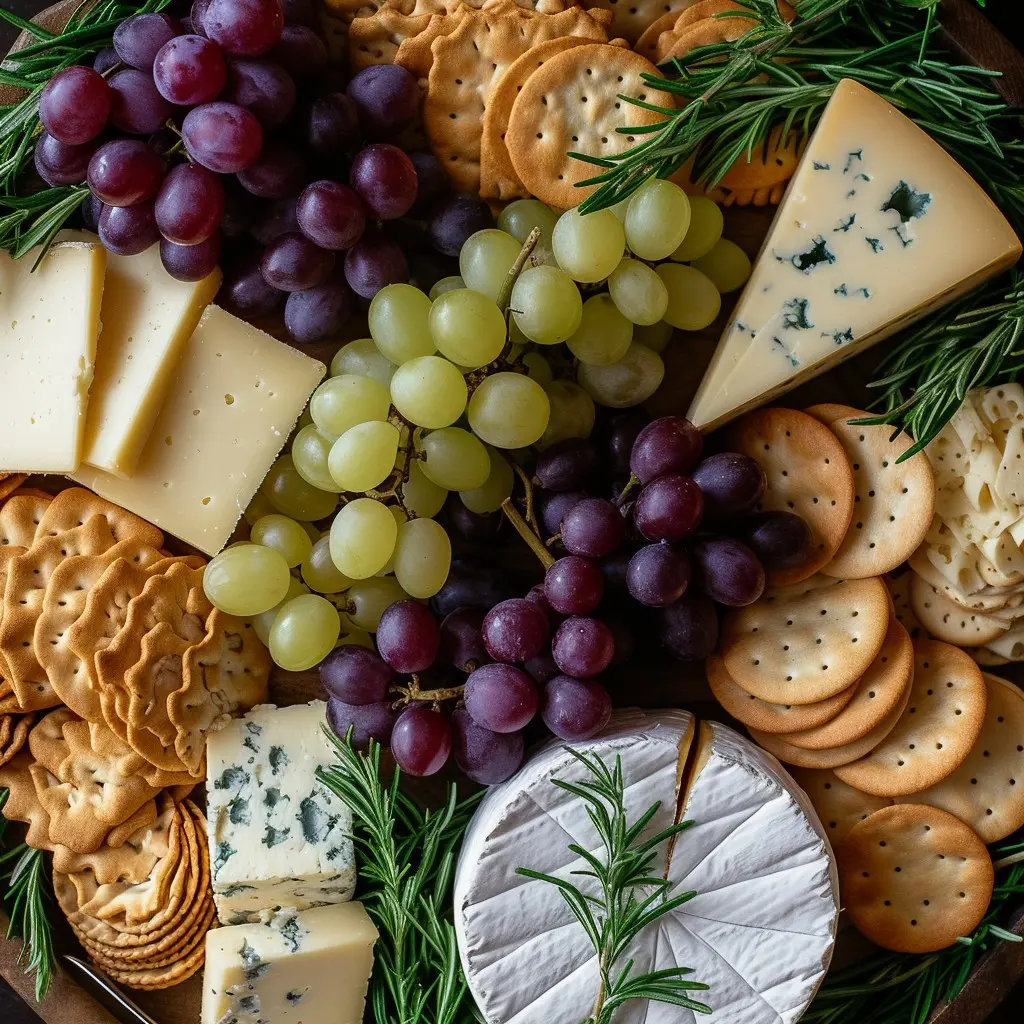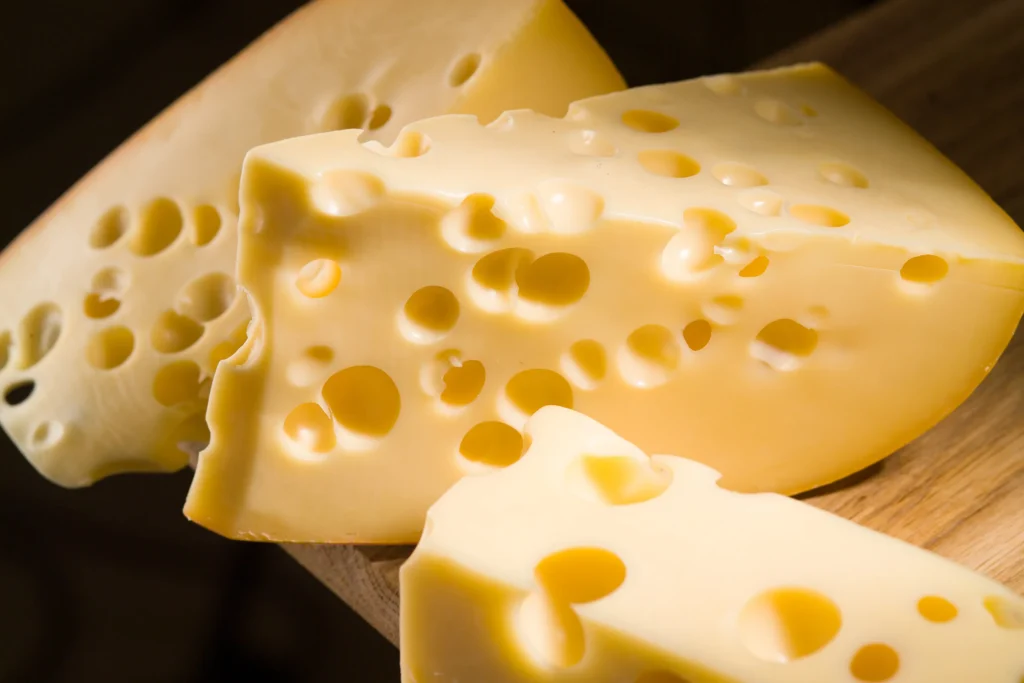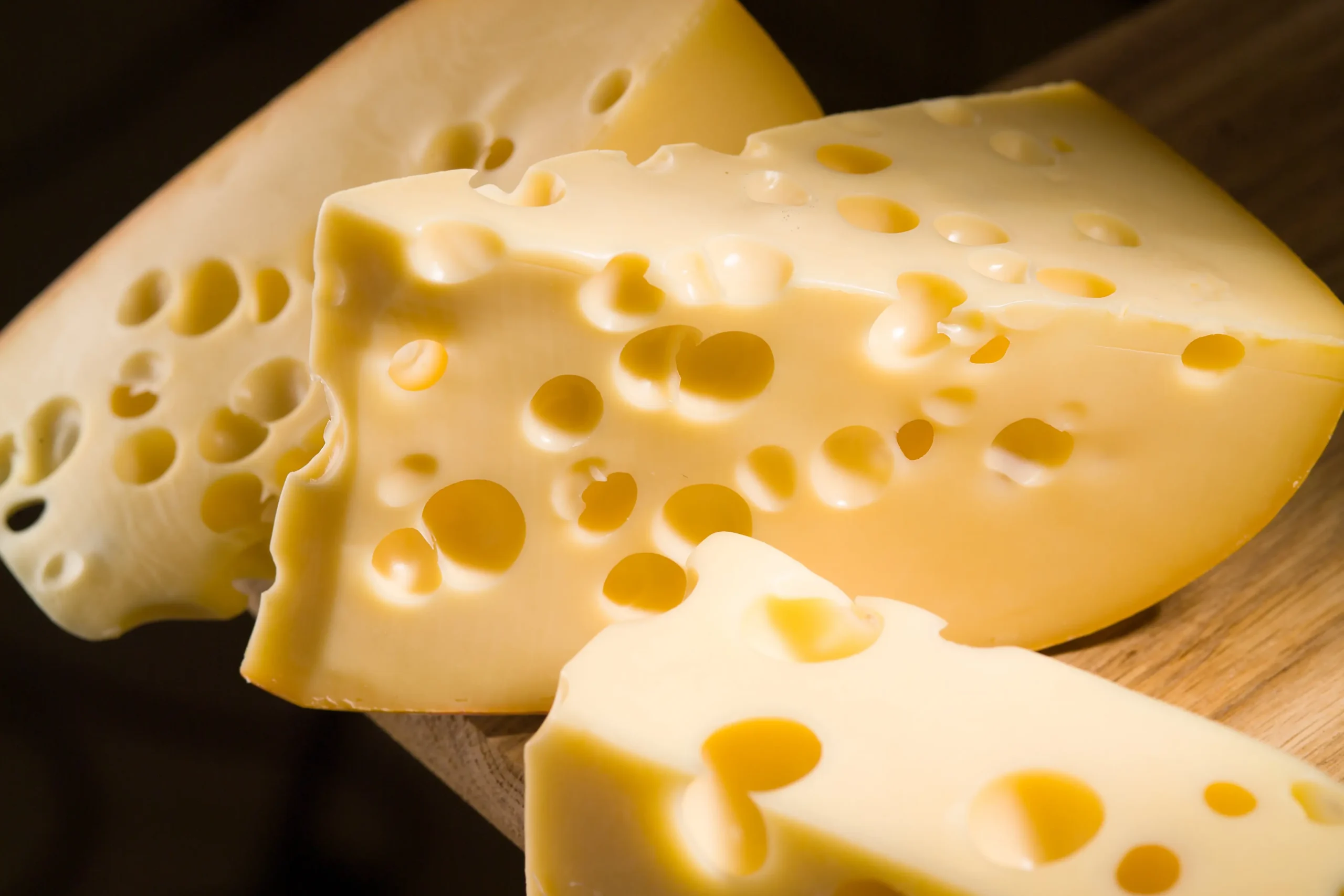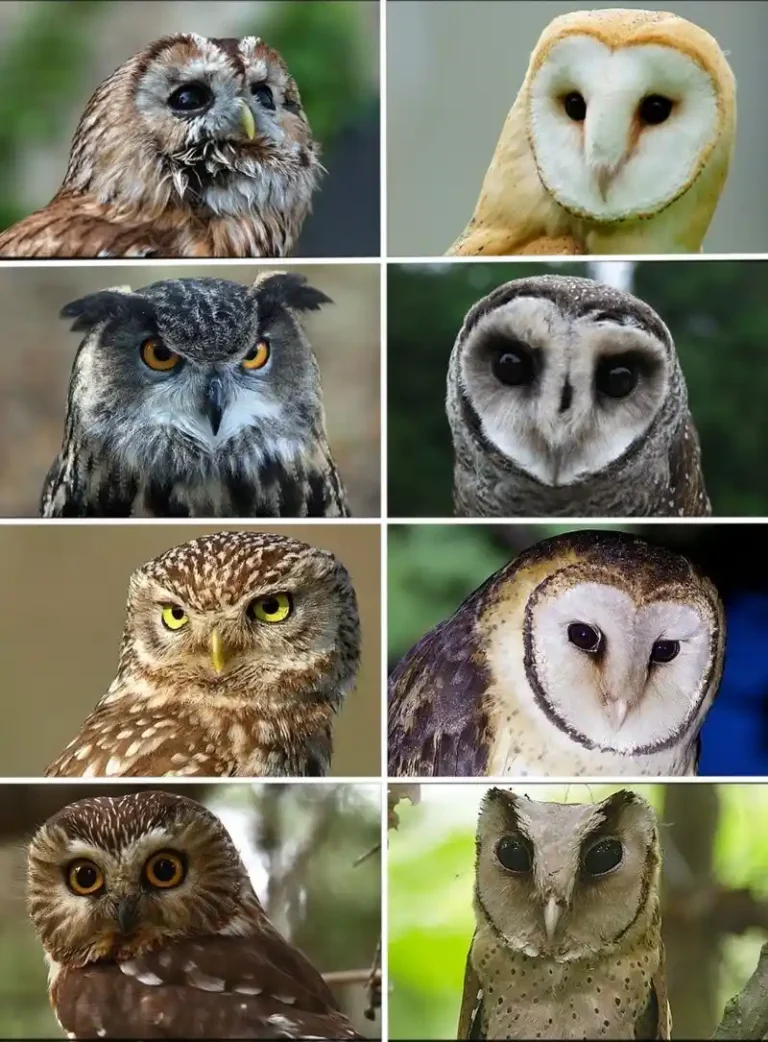Cheese: a culinary treasure that has delighted taste buds for centuries. From its ancient origins to its diverse forms, cheese is more than just a topping—it’s a marvel of flavor and tradition.
Dive into 100 fun facts about cheese that will take you on a mouthwatering journey through history, science, and culture.
Whether you’re a cheese connoisseur or just curious, these intriguing tidbits will surely add a sprinkle of excitement to your cheese experience!
Stay sharp and foster your brain’s health with our Trivia game generator or Fun Facts game for you mental exercises and mental sharpness!

1. There are over 1,800 types of cheese worldwide.
- Details: The vast variety of cheeses comes from different milk sources (cow, goat, sheep), varying aging processes, and unique regional methods. Each type offers a distinct flavor and texture.
2. Cheese is believed to have been made for over 7,000 years.
- Details: Historical evidence suggests cheese-making dates back to ancient civilizations in the Middle East and Europe. The techniques have evolved, but the basic principles remain similar.
3. The world’s largest cheese is a cheddar wheel weighing over 57,000 pounds (26,000 kg).
- Details: This colossal cheddar was made in 2015 in the UK. Its size and weight made it a record-breaking marvel in the cheese industry.
4. Roquefort cheese is one of the oldest known cheeses, dating back to Roman times.
- Details: Roquefort, a blue cheese from France, has been enjoyed since antiquity. Its unique blue veins are created by Penicillium roqueforti mold.
5. Cheese contains about 20% of the world’s protein needs.
- Details: Cheese is a high-protein food, contributing significantly to global protein intake. Different types have varying protein contents based on their milk and processing.
6. Parmesan cheese is named after the region of Parma in Italy.

- Details: Parmesan, or Parmigiano-Reggiano, originates from the Parma region. Its strict production regulations and aging process contribute to its unique flavor.
7. Cheese has been used as currency in some cultures.
- Details: In parts of ancient Europe and Africa, cheese was so valuable that it was used in trade and as a form of currency. Its preservation qualities made it highly prized.
8. The average American eats around 37 pounds of cheese per year.
- Details: Cheese consumption varies by country, but in the U.S., it’s a popular staple. This figure includes all types of cheese consumed by an average person annually.
9. Cheddar cheese was originally produced in England’s Cheddar Gorge.
- Details: The name “cheddar” comes from the village of Cheddar in Somerset, England. The unique caves in Cheddar Gorge provided ideal conditions for aging this cheese.
10. Swiss cheese is named for Switzerland, but it’s made in many countries.
- Details: The term “Swiss cheese” generally refers to cheeses with holes, such as Emmental. Although it’s associated with Switzerland, similar cheeses are made globally.
11. Cheese can be made from the milk of cows, goats, sheep, and even buffalo.
- Details: Different types of milk contribute to the variety of cheeses available. Each milk type provides distinct flavors and textures to the final product.
12. The holes in Swiss cheese are called “eyes.”

- Details: “Eyes” are formed during the cheese-making process when gas bubbles produced by bacteria get trapped in the cheese. They are a hallmark of Swiss-style cheeses.
13. Blue cheese gets its distinctive color and flavor from mold.
- Details: Blue cheeses like Roquefort, Gorgonzola, and Stilton contain Penicillium mold, which creates blue veins and imparts a strong, tangy flavor.
14. The world’s most expensive cheese is made with donkey milk and costs around $1,000 per pound.
- Details: Pule cheese, made from the milk of Balkan donkeys, is rare and labor-intensive to produce. Its high price reflects its unique production process and limited availability.
15. Cheese can be stored in the freezer, but it may change in texture.
- Details: Freezing cheese is possible, though it can affect texture. Hard cheeses tend to freeze better than soft cheeses, which may become crumbly after thawing.
16. The world’s oldest cheese was discovered in an Egyptian tomb and is over 3,200 years old.
- Details: Archaeologists found this ancient cheese in the tomb of Ptahmes, a high-ranking Egyptian official. Despite its age, the cheese’s composition suggested it was similar to modern-day cheese.
17. Cheese can be used in cooking to enhance flavors and create rich textures.
- Details: Cheese adds flavor, creaminess, and texture to a wide range of dishes, from sauces and soups to baked goods and casseroles.
18. Mozzarella cheese originates from Italy and was traditionally made from buffalo milk.
- Details: Mozzarella cheese, originally from Naples, is known for its soft, creamy texture. The traditional recipe uses buffalo milk, though cow’s milk versions are more common today.
19. Gouda cheese was named after the city of Gouda in the Netherlands.
- Details: Gouda cheese is named after the Dutch city of Gouda, where it has been produced for centuries. The cheese is known for its smooth texture and rich flavor.
20. Cheese can be aged for different periods, ranging from a few weeks to several years.
- Details: Aging, or affinage, affects a cheese’s texture and flavor. Fresh cheeses are young and soft, while aged cheeses develop complex flavors and firmer textures.
21. The name “cheddar” comes from the English village of Cheddar.
- Details: Cheddar cheese was first made in the village of Cheddar, Somerset. The name has since become synonymous with a wide range of similar cheeses produced elsewhere.
22. Brie cheese is named after the Brie region in France.
- Details: Brie cheese, known for its soft, creamy interior and edible rind, originates from the Brie region. It’s a classic French cheese often enjoyed with bread and fruit.
23. There’s a cheese museum in the Netherlands dedicated to cheese history and culture.
- Details: The Cheese Museum in Alkmaar, Netherlands, showcases the history, production, and cultural significance of cheese. Visitors can learn about traditional cheese-making methods.
24. The bacteria used in cheese-making can vary widely, affecting flavor and texture.
- Details: Different bacterial cultures used in cheese production contribute to a wide range of flavors and textures. These cultures influence the cheese’s development during aging.
25. Cheese can be made from both raw and pasteurized milk.
- Details: Raw milk cheese is made from unpasteurized milk, which can develop more complex flavors. Pasteurized milk cheese is made from milk that has been heat-treated to kill bacteria.
26. The cheese-making process involves adding rennet to milk to help it coagulate.
- Details: Rennet, an enzyme, is added to milk to separate curds (solid) from whey (liquid). This coagulation is a key step in cheese production, determining the final texture of the cheese.
27. Cottage cheese is known for its mild flavor and lumpy texture.
- Details: Cottage cheese is made from curds that are drained but not pressed. Its lumpy texture and mild flavor make it popular in both savory and sweet dishes.
28. Cheese can be paired with a variety of foods, including fruits, nuts, and wines.
- Details: Cheese pairs well with many foods, enhancing flavors and textures. Classic pairings include cheese with fruits, nuts, and different types of wine.
29. Cheddar cheese is often colored with annatto to give it a vibrant orange hue.
- Details: Annatto, a natural dye from the seeds of the achiote tree, is used to color cheddar cheese. It doesn’t affect the flavor but gives the cheese a distinctive orange color.
30. The word “cheese” comes from the Latin word “caseus.”
- Details: The Latin word “caseus” evolved into various forms in different languages, leading to the modern term “cheese.” This term has been used for centuries to describe this dairy product.
31. Cheese contains calcium, protein, and vitamins, making it a nutritious food.
- Details: Cheese is a good source of calcium, protein, and vitamins like A and B12. These nutrients contribute to bone health, muscle function, and overall well-being.
32. Feta cheese was traditionally made in Greece and is known for its crumbly texture.
- Details: Feta cheese, originally from Greece, is made from sheep’s milk or a mixture of sheep and goat milk. It’s brined, giving it a salty flavor and crumbly texture.
33. The cheese-making process has been refined over centuries, with modern techniques enhancing quality and safety.
- Details: Cheese-making techniques have evolved from ancient practices to include modern technology, improving cheese quality, safety, and consistency.
34. Limburger cheese is famous for its strong smell, which comes from bacteria used in its production.
- Details: Limburger cheese is known for its pungent odor, which is a result of bacteria used in the fermentation process. The smell is strong, but the flavor is much milder.
35. Cheese can be a part of a balanced diet when consumed in moderation.
- Details: Cheese provides essential nutrients, but it can also be high in fat and sodium. Moderation is key to enjoying cheese as part of a balanced diet.
36. Cheese can be made into various forms, including sliced, shredded, and spreadable.
- Details: Cheese comes in many forms, such as slices for sandwiches, shredded for cooking, and spreadable for easy application. These forms cater to different culinary uses.
37. Ricotta cheese is an Italian cheese made from whey, the liquid left over from cheese-making.
- Details: Ricotta cheese is made from the whey leftover from the production of other cheeses. It has a soft, creamy texture and is used in dishes like lasagna and cannoli.
38. The color and texture of cheese can vary based on its milk source and aging process.
- Details: Different milks and aging times produce cheeses with varying colors and textures. For example, goat cheese is often softer and tangier compared to cow’s milk cheese.
39. Manchego cheese comes from Spain and is made from sheep’s milk.
- Details: Manchego cheese, originating from the La Mancha region in Spain, is made from the milk of Manchega sheep. It has a firm texture and nutty flavor.
40. Cheese has been featured in art and literature throughout history.
- Details: Cheese has appeared in various art forms, from ancient paintings to modern literature. Its significance in different cultures has made it a popular subject in creative works.
41. Cheese curds are the fresh, young form of cheese before it’s aged.
- Details: Cheese curds are the result of the initial curdling of milk. They are often eaten fresh and have a squeaky texture, commonly enjoyed as a snack or in dishes like poutine.
42. The French cheese “Camembert” is known for its creamy interior and white rind.
- Details: Camembert is a soft cheese with a creamy center and a white, bloomy rind. It’s a classic French cheese often served with bread or fruit.
43. Cheese can be used to create a wide range of dishes, from simple snacks to gourmet meals.
- Details: Cheese is versatile and can be incorporated into various recipes, including pizzas, pastas, soups, and desserts, adding flavor and richness.
44. The aging process of cheese, known as affinage, can last from a few weeks to several years.
- Details: Affinage involves carefully monitoring cheese as it ages, affecting its texture and flavor. Some cheeses, like Parmigiano-Reggiano, are aged for several years to develop their complex profiles.
45. Cheese was one of the earliest forms of preserved food, extending the shelf life of milk.
- Details: Cheese-making allowed ancient people to preserve milk for longer periods. The fermentation and aging process inhibited spoilage and provided a stable food source.
46. Cheese contains lactic acid bacteria that contribute to its flavor and texture.
- Details: Lactic acid bacteria are crucial in cheese fermentation. They help develop the cheese’s flavor, texture, and aroma during aging.
47. Gouda cheese is named after the Dutch city of Gouda, but it’s not necessarily made there.
- Details: While Gouda cheese is associated with the city of Gouda, similar cheeses are made in various regions. The name refers to the style rather than the location of production.
48. Cheese can be paired with different types of alcohol, including wine, beer, and spirits.
- Details: Cheese and alcohol pairings enhance flavors. For example, wine complements soft cheeses, while beer can pair well with aged or sharp cheeses.
49. The cheese-making process can be traced back to ancient civilizations, including the Egyptians and Greeks.
- Details: Historical evidence shows cheese-making was practiced in ancient Egypt and Greece. Early methods were rudimentary but laid the groundwork for modern cheese production.
50. Cheese can be made into various shapes, including wheels, blocks, and wedges.
- Details: The shape of cheese often depends on its type and intended use. For example, cheddar is commonly sold in blocks, while cheeses like Brie are often shaped into wheels.
51. Some cheeses, like Parmesan, are grated to enhance their flavor and make them easier to use in cooking.
- Details: Grating cheese increases its surface area, allowing it to melt more easily and blend into dishes. This is common with hard cheeses like Parmesan.
52. Cheese is a good source of calcium, which is essential for bone health.
- Details: Cheese provides a significant amount of calcium, a vital mineral for maintaining strong bones and teeth. Different cheeses offer varying calcium levels.
53. Cheese can be made using traditional methods or modern technologies, affecting its flavor and texture.
- Details: Traditional cheese-making methods involve artisanal techniques, while modern technologies use advanced equipment to ensure consistency and quality.
54. Many cheeses are named after the regions where they were first made, such as Asiago and Gruyère.
- Details: Cheeses like Asiago (from Italy) and Gruyère (from Switzerland) carry names that reflect their geographic origins. These names are often protected by regional regulations.
55. Some cheeses, like Brie, have a bloomy rind formed by specific mold cultures.
- Details: A bloomy rind, seen in cheeses like Brie and Camembert, is created by mold cultures that develop a white, edible exterior. This rind helps protect and flavor the cheese.
56. Cheese can be used in both sweet and savory dishes, adding depth to a variety of recipes.
- Details: Cheese’s versatility allows it to enhance both sweet and savory dishes. It can be used in desserts, sauces, and appetizers, providing rich flavors and textures.
57. The production of cheese involves a series of steps including curdling, cutting, draining, and aging.
- Details: The cheese-making process includes curdling milk, cutting curds, draining whey, and aging the cheese. Each step is crucial for developing the final product.
58. Some cheeses are made with additional ingredients like herbs, spices, or even wine.
- Details: Cheeses can be flavored with herbs, spices, or other additives, creating unique varieties. Examples include herbed goat cheese or wine-infused cheeses.
59. The texture of cheese can range from soft and creamy to hard and crumbly, depending on its type and aging.
- Details: Cheese textures vary widely. Soft cheeses like Brie are creamy, while aged cheeses like Parmesan are hard and crumbly. Aging and processing influence these textures.
60. Cheese is often used as a topping or filling in many popular dishes, including pizza and sandwiches.
- Details: Cheese is a key ingredient in many dishes, enhancing flavor and texture. It’s commonly used in pizzas, sandwiches, and various baked recipes.
61. Some cheeses, like mozzarella, are known for their melting properties, making them ideal for certain dishes.
- Details: Mozzarella is prized for its excellent melting qualities, making it a favorite for pizza and lasagna. Its meltability adds a gooey, satisfying texture to dishes.
62. Cheese can be enjoyed on its own or paired with fruits, nuts, and crackers for a simple and delicious snack.
- Details: Cheese platters often include fruits, nuts, and crackers, which complement different cheese flavors. This makes for an easy and elegant snack or appetizer.
63. The term “cheese” can refer to both the product and the process of making it.
- Details: “Cheese” denotes both the final dairy product and the method used to create it. Cheese-making involves various techniques to produce diverse types of cheese.
64. The flavor of cheese can be influenced by factors such as milk source, aging, and environment.
- Details: Cheese flavor is shaped by its milk source, aging duration, and environmental conditions during production. Each factor contributes to the cheese’s unique taste profile.
65. Cheese was a staple food for ancient Romans and Greeks, valued for its nutrition and portability.
- Details: In ancient Rome and Greece, cheese was a common food due to its portability and nutritional value. It was an essential part of the diet for many people.
66. Some cheeses, like Limburger, are washed with brine during aging to develop their distinctive flavors.
- Details: Washing cheeses with brine or other solutions during aging helps develop their flavor and texture. Limburger cheese, for example, is washed to create its strong aroma.
67. The “cheese wheel” is a traditional shape for many cheeses, allowing for easy aging and storage.
- Details: Cheese wheels are a classic shape that facilitates aging and handling. They are practical for storage and transport, especially for larger quantities.
68. Cheese can be enjoyed at different temperatures, from chilled to room temperature, each offering a different tasting experience.
- Details: Serving cheese at various temperatures affects its flavor and texture. Room temperature cheese often has a fuller flavor, while chilled cheese maintains a firmer texture.
69. Some cheeses are coated with wax or other materials to preserve their freshness and prevent mold growth.
- Details: Wax coatings protect cheese during aging, preventing moisture loss and mold growth. This preservation method is used for cheeses like Gouda and Edam.
70. Cheese can be made into various types, including soft, semi-soft, hard, and blue cheeses.
- Details: Cheese types are classified by texture and aging. Soft cheeses like Brie are creamy, while hard cheeses like Parmesan are aged and crumbly. Blue cheeses have distinctive mold veins.
71. Cheese production involves a complex process of fermentation, coagulation, and aging.
- Details: Cheese-making includes fermentation of milk by bacteria, coagulation to form curds, and aging to develop flavor and texture. Each step is critical for the final product.
72. Cheese can be aged in special environments like caves, cellars, or temperature-controlled rooms.
- Details: Aging environments influence cheese development. Caves, cellars, and controlled rooms provide the right conditions for aging, affecting texture and flavor.
73. Cheese can be made from both pasteurized and raw milk, with each method affecting flavor and safety.
- Details: Pasteurized milk cheese is heat-treated to kill bacteria, while raw milk cheese uses unpasteurized milk. Raw milk cheeses may have more complex flavors but require careful handling.
74. The “cheese spread” is a processed cheese product that’s often used as a convenient, creamy topping.
- Details: Cheese spreads are processed to achieve a smooth, spreadable consistency. They are convenient for use as dips, toppings, or in sandwiches.
75. Some cheeses, like mozzarella, are traditionally made using the pasta filata method, where curds are kneaded and stretched.
- Details: Pasta filata is a technique used to make cheeses like mozzarella, where curds are stretched and kneaded. This method creates a smooth, elastic texture.
76. Cheese has a long history of being used as a preserved food, extending the shelf life of milk.
- Details: Cheese-making allowed ancient civilizations to preserve milk for longer periods. Its ability to store well made it a valuable food source throughout history.
77. The flavor of cheese can vary greatly depending on factors like milk type, bacterial cultures, and aging time.
- Details: Cheese flavors are influenced by milk source (cow, goat, sheep), bacterial cultures used, and aging time. Each combination creates distinct taste profiles.
78. Some cheeses are naturally low in lactose, making them suitable for people with lactose intolerance.
- Details: Aging reduces lactose content in cheese, making aged varieties like Parmesan lower in lactose. This makes them more digestible for those with lactose intolerance.
79. Cheese rinds can be edible or inedible, depending on the type of cheese and its processing.
- Details: Rinds on cheeses like Brie are edible and contribute to flavor, while some cheeses have inedible rinds, such as those coated in wax. Rinds protect and flavor the cheese during aging.
80. The world’s most expensive cheese is made from donkey milk and costs around $1,000 per pound.
- Details: Pule cheese, made from Balkan donkey milk, is extremely rare and labor-intensive to produce, contributing to its high price.
81. Some cheeses are named after the people who created or popularized them, such as Sirloin cheese.
- Details: Cheese names sometimes honor individuals who developed or popularized specific varieties. These names often reflect the cheese’s origin or inventor.
82. Cheese can be a source of probiotics, beneficial bacteria that support digestive health.
- Details: Some cheeses contain live cultures that act as probiotics, promoting gut health. Cheeses like yogurt cheese and certain aged cheeses have probiotic benefits.
83. Cheese can be made into various shapes and sizes, including blocks, wheels, and logs.
- Details: Cheese shapes vary based on its type and intended use. Blocks are common for hard cheeses, while wheels are traditional for aging. Logs are often used for spreadable cheeses.
84. Cheese has been enjoyed in various forms throughout history, from ancient Roman times to the present day.
- Details: Cheese has a rich history, with evidence of its consumption dating back to ancient civilizations. Its popularity continues today, with diverse varieties and uses.
85. Cheese is often used in culinary traditions around the world, adding flavor and richness to dishes.
- Details: Cheese is integral to many global cuisines, including Italian, French, and Mexican. Its versatility enhances a wide range of dishes and recipes.
86. Some cheeses, like Cotija, are used as a finishing touch to enhance the flavor of dishes.
- Details: Cotija cheese is a crumbly, salty cheese used to add flavor and texture to dishes like tacos and salads. It’s often sprinkled on top as a finishing touch.
87. The cheese-making process involves controlling factors like temperature, humidity, and time to produce consistent results.
- Details: Cheese production requires precise control over temperature, humidity, and aging time to ensure quality and consistency. Each factor influences the final product.
88. Some cheeses, like Havarti, are known for their mild, buttery flavor and smooth texture.
- Details: Havarti cheese is a semi-soft cheese from Denmark with a creamy, buttery flavor. Its smooth texture makes it a popular choice for sandwiches and cheese platters.
89. Cheese can be enjoyed in its fresh form or after aging, with different flavors and textures resulting from each process.
- Details: Fresh cheeses are soft and mild, while aged cheeses develop complex flavors and firmer textures. The aging process enhances the cheese’s characteristics.
90. The cheese-making process involves separating curds from whey and then pressing the curds to form the cheese.
- Details: Curds are separated from whey during cheese-making. Pressing curds helps remove excess whey and shapes the cheese. This step affects the cheese’s final texture.
91. Some cheeses, like Gorgonzola, are known for their strong, pungent flavors due to mold development.
- Details: Gorgonzola is a blue cheese with strong flavors and aromas, created by mold cultures. Its distinct taste is a result of the Penicillium mold used in its production.
92. Cheese can be enjoyed on its own or paired with a variety of accompaniments, such as fruits, nuts, and breads.
- Details: Cheese pairings with fruits, nuts, and breads enhance its flavors and textures. This creates a balanced and enjoyable tasting experience.
93. The texture of cheese can range from soft and spreadable to hard and crumbly, depending on its type and aging.
- Details: Cheese textures vary widely. Soft cheeses are creamy, while hard cheeses are firm and crumbly. The aging process and ingredients influence these textures.
94. Cheese can be used in both sweet and savory dishes, adding depth and richness to recipes.
- Details: Cheese’s versatility allows it to enhance both sweet and savory dishes. It’s used in everything from cheese cakes to savory quiches, providing flavor and richness.
95. Cheese has been featured in numerous culinary traditions, from Italian pasta dishes to French cheese boards.
- Details: Cheese is a staple in many cuisines. Italian dishes often feature cheese, while French cheese boards showcase a variety of cheeses with accompaniments.
96. Some cheeses, like Gouda and Edam, are often coated with wax to preserve freshness and prevent mold.
- Details: Wax coatings protect cheeses during aging, preserving their quality and preventing unwanted mold growth. This method is common for cheeses like Gouda and Edam.
97. Cheese can be enjoyed at different stages of aging, with flavors evolving from mild to sharp.
- Details: Aging changes cheese flavors. Fresh cheeses are mild, while aged varieties develop sharper, more complex flavors. The aging process contributes to these flavor changes.
98. The diversity of cheese types reflects the rich culinary traditions and cultural practices around the world.
- Details: Cheese diversity showcases global culinary practices. Different cultures have unique cheese-making traditions, contributing to a wide variety of cheese types.
99. Cheese can be made from a variety of milk sources, including cow, goat, sheep, and buffalo, each contributing unique flavors.
- Details: Milk type affects cheese flavor. Cow’s milk cheeses are common, while goat, sheep, and buffalo milks create distinct flavors and textures, expanding cheese variety.
100. Cheese is a beloved food enjoyed by people around the world, with a rich history and cultural significance.

- Details: Cheese’s global popularity reflects its historical and cultural importance. It’s enjoyed in many forms and continues to be a cherished food in various cuisines.






